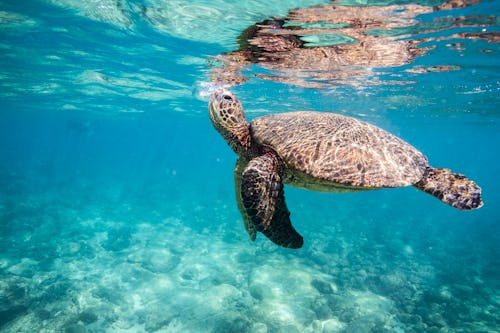
Good news can be awfully difficult to come across. Everyday, it seems like people are finding new ways to implode our world. But recovery is possible! Don’t believe me? Just look at Louisiana’s Chandeleur Islands, where endangered sea turtles are nesting for the first time in over 75 years.
You might remember hearing about the Chandeleur Islands after the 2010 Deepwater Horizon rig resulted in the now infamous BP oil spill. The event had a severe impact on the Chandeleur Islands, a chain of barrier islands in the Gulf of Mexico that are off the coast of New Orleans. The islands have also been harmed by hurricanes and rising sea levels.
In May, Louisiana’s Coastal Protection and Restoration Authority began closely monitoring the Chandeleur Islands as part of restoration efforts. And last week, the CPRA reported that wildlife experts at the Breton National Wildlife Refuge documented over 50 turtle crawls and two live hatchlings of the Kemp’s ridley sea turtles.
Also known as the world’s smallest sea turtle, the Kemp’s ridley turtle was once abundant in the Gulf of Mexico. According to the National Oceanic and Atmospheric Administration, the turtle’s population declined in the mid-20th century, with only several hundred females nesting in the 1980s. Now, 95% of the turtle’s nesting takes place in Tamaulipas, Mexico.
“Louisiana was largely written off as a nesting spot for sea turtles decades ago, but this determination demonstrates why barrier island restoration is so important,” CRPA Chairman Chip Kline said in a statement.
The Chandeleur Islands were already known for providing crucial habitats for numerous species like mottled ducks, secretive marsh birds, and wading birds. But Louisiana Department of Wildlife and Fisheries Secretary Jack Montoucet noted that “with the recent discovery of a successful Kemp’s ridley sea turtle hatching, the islands’ value to the region has been elevated.”
Peak sea turtle nesting season takes place through June and July, with young turtles expected to hatch 50 to 60 days later. Authorities are keeping a close eye on the Chandeleur Islands to hopefully spot additional Kemp’s ridley hatchlings making their way to the sea. The CPRA also said that loggerhead sea turtles, a threatened species, are nesting on the islands, too.
“We have a responsibility to protect the wildlife here, and that means creating safe and nourishing environments for these turtles and other animals that call Louisiana home,” CPRA Executive Director Bren Haase said in a statement. “It’s an exciting discovery, and we hope to see additional hatchlings emerging in the weeks and years to come.”







